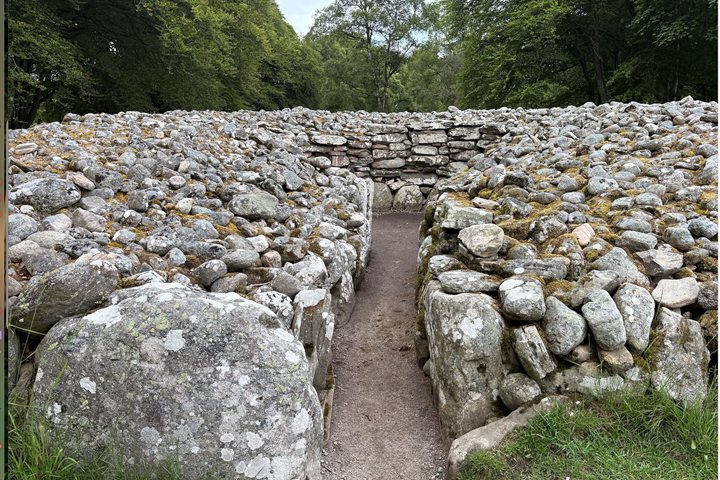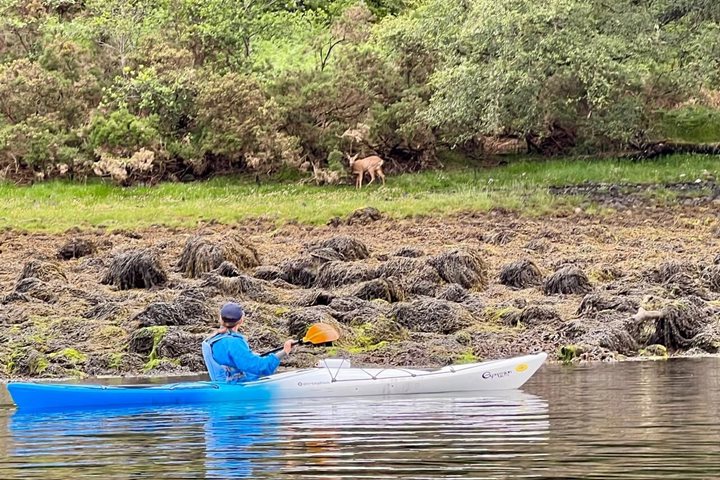A short bus ride from the dock at Kyle of Lochalsh is photogenic Eilean Donan Castle, and we spent a pleasant morning exploring the extremely photogenic area. Following lunch on board Lord of the Glens, we sailed into the Sound of Sleat to reach the southern part of the Isle of Skye. From our ship platform, it was a delight for all aboard to watch the fast-moving rain squalls race across the landscape, providing a wonderful interplay of light and shadow for great photographic opportunities. After tying up at the Armadale dock, we stretched our legs on a short walk to see Armadale Castle, the seat of the MacDonald clan. While the old stone architecture is interesting to view from the outside, the real attractions at this site are the fascinating and comprehensive Museum of the Isles and the peaceful and very beautiful botanic gardens. There are species of trees from all over the world featured and cultivated, some from a few centuries ago. A busy day drew to a close with a quick sail across the sound to the small, remote village of Inverie and a visit to its renovated pub after dinner.
6/15/2025
Read
Lord of the Glens
Loch Ness, Culloden and Clava Cairns
Today we entered the famous Loch Ness, home of Nessie! We then visited the hallowed Scots battle ground of Culloden. On April 16, 1746, Bonnie Prince Charlie and his highland troops fought a courageous but doomed battle against the well-armed troops under the Duke of Cumberland, the son of King George II. Fifteen thousand highlanders were killed, while the English lost 300. Culloden Moor was soddened from a recent rain, which greatly impeded the highland troops and their traditional form of warfare. Additionally, they were massively outgunned by the English artillery. Bonnie Prince Charlie managed to escape despite a £30,000 bounty on his head, and he returned to France. This ended the Jacobite efforts to return the throne to the rightful Stuart heirs. The Culloden Museum was excellent and provided an overview of the tragic event that took place there. We next visited the Bronze age site of Clava Cairns. There circular stone grave sites, passage graves, and standing stone aligned to the solstice are 4,500 years-old and part of the megalithic culture from Malta to Shetland. They have been used by the local population for ritual purposes and infrequent burials until 700 CE.







